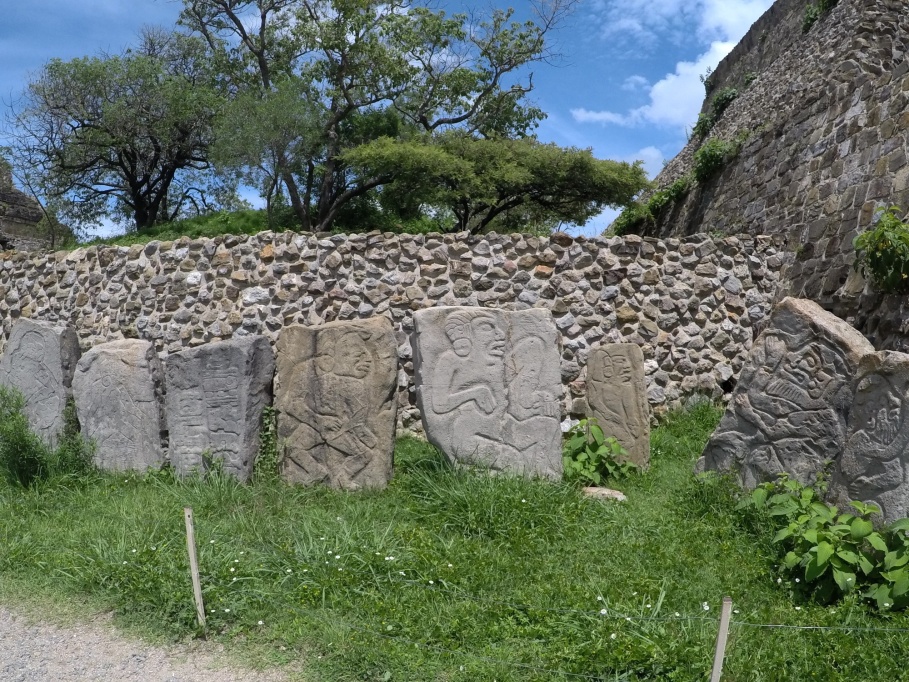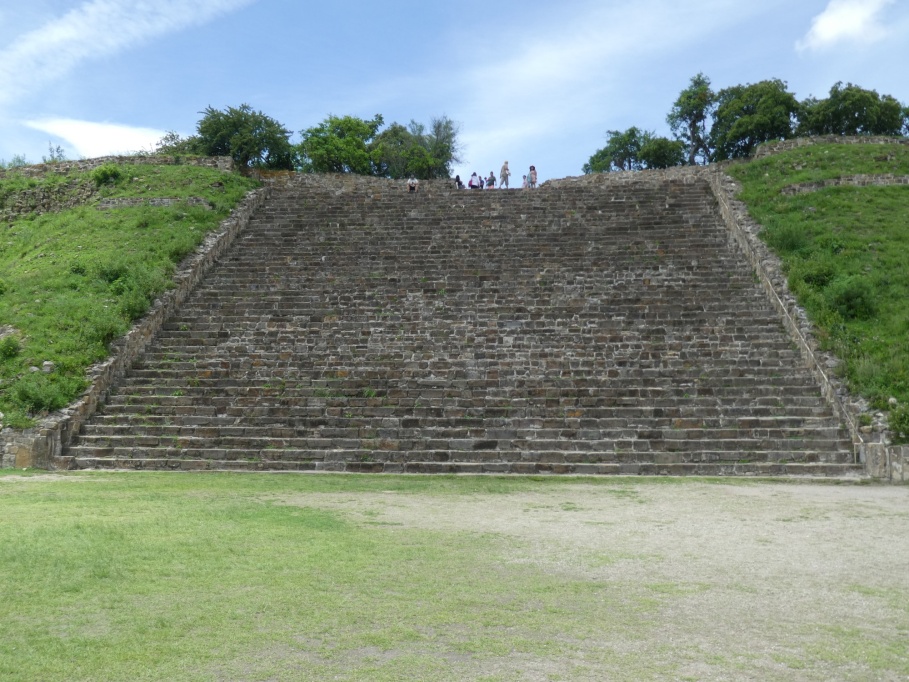Monte Alban Mexico Travel Guide A Vagabond Life
Monte Alban sits on a low mountian range over looking the city of Oaxaca in the Mexican central valley region. It is one of the most important archaeological zones in Mesoamericaca and one of the the most significant archeological site in the Oaxaca Valley
Founded by the Zapotec in the 6th century it grew to be their capital for thirteen centuries between 500 B.C and 800 A.D. As the Zapotec culture declined in the fourteenth century, areas of Mount Alban became occupied by the Mixtec peoples.
The site sits on over 6 square kilometres and includes impressive architectural remains that include the structures built around the Great Plaza, pyramids, terraces and platforms.
The first explorations and restorations of the archaeological zone started in 1938 by Alfonso Caso. It was Caso that discovered Tomb 7 which held one of the richest burial finds from pre-Columbian Mesoamerica ever found. Artifacts from tomdb 7 can be found in the Oaxaca Cultural Museum.
Monte Alban suffered severe damage in the 2017 earthquake with fifteen structures suffering structural collapse and many more needing emergency structural support.
The archaeological preservation of the site continues today.
Monte Alban Oaxaca Mexico Map
Getting To Monte Alban Oaxaca Mexico
Guided Tour
There are numerous agencies located in Oaxaca who conduct guided tours, simply head to the Zocalo and find on of the agents who can talk you through the different options and costs.
Mini Van
If you prefer to wander the site without a tour you can take a mini van to and from Mount Alban. We used Lescas Tours who depart from their office in the Zocalo, drop you off at the site and collect you three hours later returning you to the Zocalo.
Taxi
You can get a taxi to the site, the downside is there is not always a taxi there when you want to return and we witnessed many people waiting for taxi’s when we were there.
What to Take To Monte Alban Oaxaca Mexico
Monte Albán’s climate can be scorching, making it essential to bring water and a hat for sun protection. Fortunately, visitors can find respite at the on-site café, offering not only refreshments but also a breathtaking vista of the surrounding valley. Indulge in a delicious meal while savoring a cold drink, immersing yourself in the beauty of the landscape below. This oasis provides a welcome break from the heat, allowing travelers to recharge and rejuvenate before continuing their exploration of the ancient ruins. Whether you’re seeking shade from the sun or simply craving a moment of relaxation amidst the historical marvels of Monte Albán, the café offers a delightful retreat for all visitors.
The Structures of Monte Alban Oaxaca Mexico
Stones Of The Dancers
The “Stones of the Dancers” at Monte Albán, Mexico, are a fascinating archaeological find, known for their intricate carvings and mysterious significance. These large stone slabs, adorned with images of dancers and other figures, are thought to have played a ceremonial role in the ancient Zapotec civilization. Scholars believe that the carvings depict dancers in elaborate costumes, engaged in ritual performances that were central to Zapotec religious and cultural practices. The Stones of the Dancers offer a glimpse into the artistic and spiritual traditions of the Zapotec people, adding to the mystique and allure of the Monte Albán archaeological site.
The Sun Dial
The Sun Dial at Monte Albán, Mexico, is an ancient astronomical device that served as a crucial tool for the Zapotec civilization. Carved from stone and meticulously aligned with the movements of the sun, the Sun Dial enabled the Zapotecs to accurately measure the passage of time, mark the changing seasons, and coordinate agricultural activities. This remarkable artifact not only showcases the advanced knowledge of astronomy possessed by the Zapotecs but also highlights their sophisticated understanding of the natural world. Today, the Sun Dial stands as a testament to the ingenuity and scientific prowess of this ancient civilization, captivating visitors with its historical significance.


The North Platform
The North Platform at Monte Albán, Mexico, stands as one of the most commanding structures within this ancient Zapotec capital, offering insights into the ceremonial and political life of the civilization. Positioned strategically for its panoramic views, it served as a critical space for rituals and gatherings, symbolizing the power and authority of the Zapotec leaders. The platform’s grandiose architecture and alignment with celestial bodies underscore the Zapotecs’ deep connection to the cosmos and their sophisticated understanding of astronomy. As visitors explore the North Platform, they are transported back in time, imagining the grand ceremonies and events that once took place in this significant archaeological site.
The Palace at Monte Albán
The Palace at Monte Albán, Mexico, is a remarkable architectural complex that served as the administrative and residential hub of the ancient Zapotec capital. This sprawling structure, adorned with intricate carvings and grand courtyards, reflects the sophistication and wealth of the Zapotec rulers. It housed elite members of society, including priests, nobles, and government officials, and served as a center for political, religious, and social activities. As visitors explore the Palace, they are transported back in time, gaining insights into the daily life, governance, and cultural practices of the Zapotec civilization that once thrived in this majestic city atop the Oaxacan hills.


The South Platform
The South Platform at Monte Albán, Mexico, is a monumental structure that played a pivotal role in the ancient Zapotec civilization. Positioned strategically at the highest point of the site, it served as the focal point for ceremonial activities, religious rituals, and political gatherings. Its expansive size and commanding presence highlight the power and authority of the Zapotec rulers who presided over this ancient city. As visitors explore the South Platform, they are immersed in the rich history and cultural significance of Monte Albán, gaining insights into the spiritual and social practices of this remarkable civilization.
The Ball Court at Monte Albán
The Ball Court at Monte Albán, Mexico, is an integral part of the site, illustrating the importance of the Mesoamerican ballgame in Zapotec society. This ancient sporting arena, where players used their hips to propel a rubber ball through stone rings, was more than a game; it held deep religious and political significance. Rituals and ceremonies often accompanied the games, sometimes involving human sacrifice to appease the gods. The Ball Court at Monte Albán is a testament to the cultural and spiritual life of the Zapotec people, offering visitors a glimpse into the complex social dynamics and beliefs of this ancient civilization.







